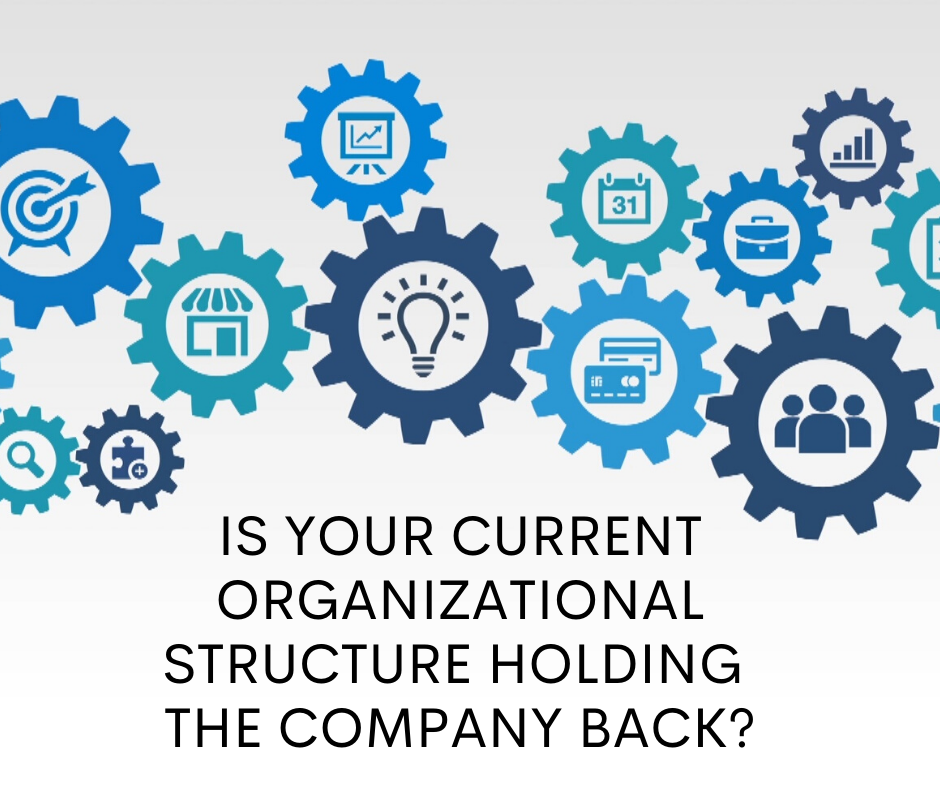 The word structure can have many different meanings within a company. Organizationally, structure can refer to a legal designation, such as a corporation, partnership, or sole proprietorship. Operationally, structure also refers to how certain activities are to be directed. These activities encompass rules, responsibilities, roles, systems, and can encompass such questions as
The word structure can have many different meanings within a company. Organizationally, structure can refer to a legal designation, such as a corporation, partnership, or sole proprietorship. Operationally, structure also refers to how certain activities are to be directed. These activities encompass rules, responsibilities, roles, systems, and can encompass such questions as
- Who is the customer and what do they want?
- How will what they want be defined and construed as work with defined results?
- Who will accomplish the work?
- What resources will be needed?
- Where is it to be done, and to what standard?
These kinds of questions give clues as to the origins and reasons for structure, and should be asked–and answered–at the beginning stages of establishing a company.
Yet, structures change with the times and tastes of society, and it is advantageous to a company to revisit its organizational structure to ask whether it still meets current internal and external needs and mores.
The initial organizational structure
The ideal time for structural considerations is when a company is first being envisioned, designed, and funded. Much like architecting a building, knowing where it is to be located and how it is to function in order to meet a need will help to determine its initial design and footprint.
It is best to start with the big questions and then work into the details. How will the organization be built to suit the needs of the owners and customers? What about questions of location, purpose, safety, functionality, objectives, requirements, and budget? These are as vital considerations as understanding the purpose or mission of the organization. What it is to do and for whom, determines how it should be built.
Reassessing in response to shifting markets
The reality of shifting markets and consumer demands often cause organizations to reevaluate whether or not their structure is still helpful to achieving their goals. They may discover that it is now a hindrance to future growth. In other words, what worked well at an earlier time, may no longer fit the current business climate.
Consider the world before COVID-19, when schools were structured to deliver education on site, when grocery stores didn’t have Plexiglas barriers and shoppers didn’t wear masks, when fitness centers positioned workout equipment less than 6 ft. apart, and when our public spaces like football stadiums and concert halls were packed. What happened? Safety, cleanliness, and disinfecting became national, if not global priorities, and companies had to shift their structures in deference to a new reality.
Consider the impact the Black Lives Matter movement is having on the way justice and equality are reevaluated and addressed by governments, communities and corporations. All are re-evaluating the systems, rules and messages they have instituted. Nascar has removed confederate flags, and the 1889 Quaker Oats, Aunt Jemima brand, has been retired because, as Quaker Oats states, it was “based on a racial stereotype.”
In short, these timeworn examples don’t fit the sensibilities of this generation of young, global leaders. They reject societal structures that fail to meet standards of truth, justice, and accountability, and replace them with organizational structures that are responsive to cultural events and issues.
This process of reassessment and realignment requires that companies ask: what do we currently believe, and does our structure reflect that belief?
One company that experienced this reassessing and restructuring of their messaging is Starbucks. The entire company shut down for a day so that all employees could participate in retraining. In doing so, Starbucks signaled the message: we want to be good citizens, we’re retraining and restructuring, and this is how we’re going to address it moving forward.
The result among organizations awakening to the need for structural changes is a renewed sense of purpose and relevance. They are rebuilding for greater impact and inclusion. The way organizations design, build, and communicate what the market now needs and wants will determine its ability to move forward or fall back.
Reassessing in response to internal needs
In addition to current events and shifting markets, companies should also periodically reassess their structure to ensure that it is the most effective in meeting the companies’ financial and organizational needs.
What are some signs that the structure needs to be reconsidered?
- The company is experiencing unnecessary internal delays
- The quality has started to decrease
- The employees are working too much but yielding too little
- The technology is weak or ineffective
- The company is growing too fast, with little time to train people effectively or to plan for future growth
- There’s not a clear workflow process, so work is slipping through the cracks
- The company is not as profitable as it should be and cannot hit its margins of profit
- The company has moved away from its core capabilities
Roadblocks to reassessment
There are various reasons why companies may be reluctant to reassess their organizational structure:
- Companies don’t want to think about it: it can be difficult work
- Decision makers may not know there’s a problem; they may be so far removed from day-to-day operations and what it looks like from the ground level
- The management team may be aware of it, but it gets away from them, or they are reluctant to bring it up
- The employees do not feel that they can discuss it with their managers
- The owner may only be interested in sales and may not see how that narrow perspective can bring down the whole house
Overcoming the roadblocks
Each of the roadblocks above has a clear answer or multiple solutions. Companies need to commit to it as a priority by providing the time, labor, and financial resources to reassess. Having a collaborative mindset within the organization can create a clear line of communication for all of the employees within an organization. Another option to facilitate the process is to hire a consultant who can help to reassess and realign operational goals and strategies and to explore whether the priorities are in the right place.
When reassessing the organizational structure, the leadership should be clear in communicating what the process is, what the goals are, and how the company expects to be better as a result of having done it. It requires effective leadership, strong commitment, and clear and consistent communication. The leaders should set the tone and the expectations, and be encouraging through the process.
A company’s organizational structure is necessarily dynamic and requires flexibility and honest reassessment to ensure an alignment between the company’s goals and its practices, its branding, and its communication. But it is absolutely in the company’s interest to realign culturally and operationally.
Management Guru, Peter F. Drucker once posited, “The assumptions on which the organization has been built and is being run … shape any organization’s behavior, dictate its decisions about what to do and what not to do, and define what the organization considers meaningful results.”
The time could not be more optimal to reassess your organization. Can its current structure still meet its mission? Let’s talk about it. As business consultants, we at Bellewether can help you examine your organization and suggest measurable and actionable steps to meet today’s culture and the company’s needs.


